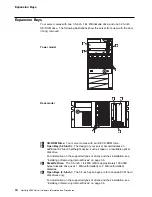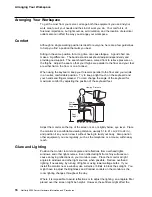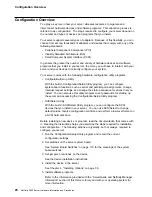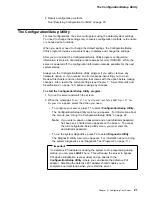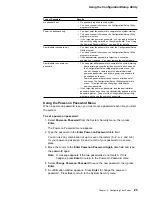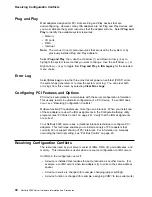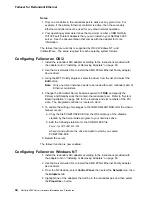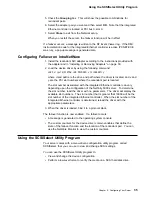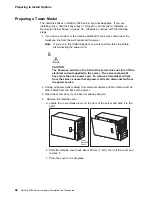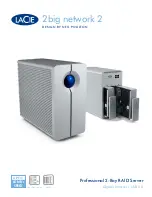
Using the Configuration/Setup Utility
Use the Left Arrow (
←
) or Right Arrow (
→
) key to highlight the options for the
selected menu item.
Core Chipset Control
Select this choice to modify settings that control features of the core chip set on the
system board. Do not make changes here unless directed to do so by an IBM
authorized service representative.
PCI Bus Control
Select PCI Bus Control to:
Change the master latency timer values for PCI bus 0 and PCI bus 1.
Specify the planar interrupt routing (IRQs) for SCSI, Ethernet, video, and USB.
Specify the slot interrupt routing (IRQs) for PCI slots.
Enable and disable PCI device types (SCSI, video, Ethernet) and slots. When
a PCI adapter is defective, you can use Alt+F1 at startup and then disable the
PCI adapter in order to enable the system to start up successfully.
Note: Any changes you make to IRQs will not be reflected in the PCI Interrupt
Routing selection of the System Information menu until you restart the
server.
Cache Control
Select this choice to define the microprocessor cache state as enabled or disabled,
and to define the microprocessor cache type as Write-back or Write-through.
Selecting write-back mode will provide the maximum system performance.
Memory Settings
Select this choice to view the server banks of memory and to enable or disable
selected rows of memory within those banks.
If a memory error is detected during POST or memory configuration, the Netfinity
5000 server can automatically disable the failing row of memory and continue
operating with reduced memory capacity. If this occurs, you must manually enable
the row of memory after the problem is corrected. Choose Memory Settings from
the Advanced Setup menu; then use the the Up Arrow (
↑
) or Down Arrow (
↓
) key
to highlight the row that you want to enable. Use the Left Arrow (
←
) or Right Arrow
(
→
) key to select Enable.
Advanced ISA Settings
Use this selection to set the timer delay for ISA I/O recovery.
Server Processor IRQ Settings
Use this selection to specify the IRQ the system-management processor is to use.
Chapter 3. Configuring Your Server
29

